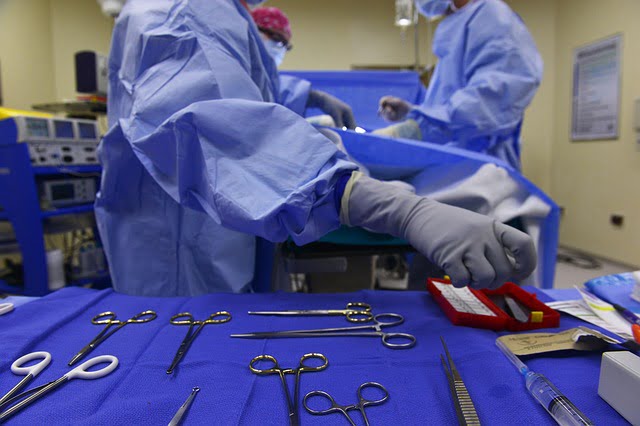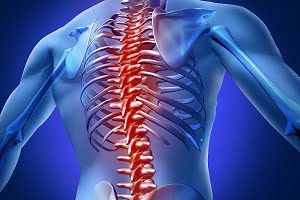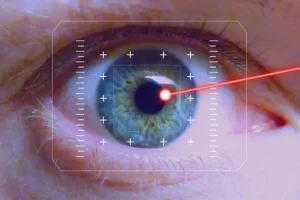All About Sciatica
- Updated on: Jul 12, 2024
- 8 min Read
- Published on Oct 3, 2019


Sciatica: Definition Overview
Sciatica is pain in the lower extremity due to compression of the sciatic nerve. The compression in the sciatic nerve causes pain and cramps in the lower back (lumber area) of the body. The pain extends down the leg to calf, extending to the foot, and also to the toes. It usually occurs only on one side of the body – mainly the left side. Later, the pain may spread to both the sides of the body. The pain can be excruciating (shooting and burning) which makes standing or sitting nearly impossible for a person.
The pain associated with the sciatic nerve may take weeks to diminish. The severity of pain defines treatment options delivered to the patient.
About the sciatic nerve
The sciatic nerve is the largest nerve in the body. There are two sciatic nerves which run from the lower spinal cord to the buttock and hip, and continue down the back of each leg to the foot. Both the nerves carry nerve signals for motor control of several muscles of the lower leg and stimulate sensations in the backs of the thighs, calves and feet.
The width of the sciatic nerve is about one inch and it consists of multiple nerve bundles. Sciatica begins when this sciatic nerve is compressed or pinched. A herniated (slipped) disc or a bone spur on the spine or narrowing of the spine (spinal stenosis) causes this compression. It commonly occurs in the area where the nerve passes out of the spinal column in the lumbar (lower back) region. This causes inflammation, pain and often some level of numbness in the affected leg.
Some common signs and symptoms of Sciatica
The most frequently occurring signs and symptoms of sciatica are:
- Severe pain in lower back
- Pain in the rear or leg
- Pain in hip
- “Pins and needles” sensation down the leg
- Burning sensation or tingling down the leg
- Weakness, numbness in the upper thighs or difficulty in movements of leg or foot
- Loss of bladder or bowel control
- A constant pain on one side of the leg
- A shooting pain making the person difficult to stand
- Less common symptoms might include an inability to bend the knee or move the foot and toes
- Sometimes, the symptoms of sciatica are provoked while walking or bending at the waist and then are relieved by lying down or resting in proper position. Changing the positions partially or completely can give relief in sciatica pain.
Depending on the position where the sciatic nerve is affected, the pain shall extend accordingly from the lower back travelling all the way through the back of the thigh and then down through the leg extending to the foot or toes.
What are the causes of sciatica?
The causes of sciatica include spinal injury or trauma, bone spurs or other growths, narrowing of the spinal canal, tight or swollen muscles in the buttock when numbness occurs in the leg i.e. when the leg “goes to sleep.”
Sciatica can also be caused by osteoporosis when the nerves are pinched by osteoarthritis and fractures.
Sciatica is mainly initiated by irritation in the sciatic nerve in the roots of the lower lumbar and lumbosacral spine.
Other causes of sciatica may include:
- Lumbar spinal stenosis which means narrowing of the spinal canal in the lower back.
- Degenerative disc disease is the breakdown of discs whose function is to act as cushions between the vertebrae
- The discomfort due to ruptured intervertebral disk known as to as radiculopathy
- Spondylolisthesis is a condition in which one vertebra slips forward over another which leads to excessive pain in the sciatic nerve
- Any injury such as a pelvic fracture
- Muscle spasm in the back or buttocks
- Pregnancy can causes sciatic pain in many women
- Piriformis syndrome causes sciatic pain. The sciatic nerve is trapped deep in the buttock by the piriformis muscle.
- Symptoms of sciatica can occur by lifting heavy loads such as by carrying large wallets or other hard objects such as golf balls in the back pocket of pants, or sitting on a hard surface for an extended period of time.
Other causes of sciatica include irritation of the nerve from an adjacent bone, tumor, muscle etc, internal bleeding, infections in or around the lumbar spine, injury, and other causes.
What are risk factors for sciatica?
The risk factors for sciatica may include:
Age
Many changes occur in the spine with age, such as herniated disks and bone spurs. They may result in sciatica.
Injury
Lumbar disc disease, slipped disc, degenerative arthritis of the lumbar spine, trauma or injury to the lumbar spine may increase the chances of developing sciatica.
Obesity
The stress on the spine i.e. excessive body weight contributes to spinal changes that trigger sciatica.
Occupation
Carrying heavy loads or driving a motor vehicle or prolonged sitting for long periods on regular basis might sometime increases the risk of getting sciatica.
Health condition
Certain health conditions indirectly increase the chances of sciatica. For example, the body uses blood sugar in a different way if a person has diabetes. This increases the risk of nerve damage.
Other sciatica risk factors
There are many other factors that may increase the risk of developing sciatica. These may include wearing high heels, or sleeping on a mattress that is too hard or too soft etc.
Diagnosis of sciatica: How is sciatica diagnosed?
Your doctor will conduct physical examination to look for signs of sciatica such as:
- Pain, burning sensation, numbness, or tingling from the lower back and upper back, moving down behind the thigh to the back of the leg resulting in lumber pain, hip pain and leg pain which might indicate sciatica.
- Sometimes, the pain radiates around the hip or buttock which makes walking difficult for some people.
- Sciatica is often associated with lower back pain known as lumbago, but it can occur without low back pain also.
Imaging tests for sciatica
After the physical examination, your doctor may order certain tests such as X-rays, CT scan, MRI scan, electromyogram etc to detect the exact cause of sciatica.
Spinal X-Ray for sciatica diagnosis
An X-ray uses radiations to produce detailed pictures of bones of the spine. The pictures are recorded as black and white images on a special film or computer. The bones and other parts of the body which are thick (or dense) depict the white pattern in the picture whereas the softer tissues, like fats or muscles, appear in shades of gray in the images.
A spinal X-ray shows damaged bones, arthritis, spinal disk problems, any tumors, osteoporosis (thinning of the bones), and any abnormal curves of the spine, any inborn problem or infection in the spine.
CT scan and MRI for detecting sciatica causes
A computed tomography (CT scan) uses X-rays to produce pictures that depict cross-section of the bone. Mostly, for detailed pictures of the spine and nearby parts, magnetic resonance imaging (MRI) is done. Powerful magnets and radio waves mechanize the procedure for MRI scan to produce images of the back.
Electromyography (EMG) for diagnosing sciatica
EMG measures the electrical impulses (which the nerves produce) and also studies responses of the muscles. It also helps to confirm whether nerve compression is caused by herniated disks or narrowing of the spinal canal (called spinal stenosis).
Sciatica treatment: What are treatment options for sciatica?
Physical therapy for sciatica
- A rehabilitation program prescribed by a physiotherapist can help in preventing future injuries (which might trigger the acute pain of sciatica).
- Regular exercise for correct posture, and to strengthen the back muscles is important during physical therapy. It improves flexibility.
- Stretching exercises are also recommended when the pain begins to slow down.
- Massage therapy and ultrasounds are often conducted as part of physical therapy session.
- Acupuncture: In acupuncture, hair-thin needles are inserted into the skin at specific points on the body. Acupuncture helps in reducing back pain in some cases. Only licensed practitioners should be recommended for acupuncture.
- Chiropractic: Chiropractic therapies involve spinal adjustment (manipulation). It is used for treating restricted spinal mobility. Restoring the spinal movement and improving the spine function lowers the pain. Spinal manipulation is an effective and safe standard treatment for reducing the back pain (might not be appropriate for radiating pain).
Medications for sciatica
- The type of drugs which are prescribed to curb down the sciatica pain include anti-inflammatory drugs such as ibuprofen, muscle relaxants such as cyclobenzaprine (Flexeril) and tizanidine (Zanaflex), narcotics such as codeine, vicodin, morphine (which is a stronger medicine for severe pain), anti-seizure medications, tricyclic antidepressants and anticonvulsant drugs (they block the pain messages to the brain or enhance the body’s self production of endorphins).
- NSAIDs (nonsteroidal anti-inflammatory drugs) such as meloxicam (Mobic) and diclofenac (Voltaren) are often prescribed for sciatica.
- Other useful medicines for sciatica are: Gabapentin (Neurontin), Duloxetine (Cymbalta), Acetaminophen (Tylenol), etc.
- Side effects of these medicines include constipation, increase in weight, dry mouth, bladder problems, blurred vision and dizziness.
Steroid injections for sciatica
- Epidural injection: An epidural steroid injection or an injection of a corticosteroid can be given around the spinal cord area, which is also known as the epidural space, into the involved nerve root (to block the nerve) to provide temporary or prolonged relief from the sciatic pain. It is supposed to suppress any inflammation in the nerve which reduces the sciatic pain.
- Steroids, anesthetics and anti-inflammatory medications are typically delivered in an epidural injection.
- Corticosteroids decrease the intensity of pain by suppressing inflammation around the irritated nerve but are beneficial for only a short span of time (few months only).
- Due to the side effects of steroid injections, they are not recommended too frequently. They are given only twice or thrice in a year.
Surgery for sciatica
Current surgical options for sciatica include lumbar laminectomy with diskectomy, where the herniated portion of the disc is removed. This relieves the nerve compressions and helps retain the maximum amount of normal disc.
Sometimes, the bone spur or the portion of the herniated disk is removed during surgery as it presses the (pinched) affected nerve. The compressed nerve causes significant weakness, loss of bowel or bladder control when the pain progressively gets worse or doesn’t improve with other therapies.
The surgery is performed by making a small incision and looking through a microscope (microdiskectomy). Success rates of standard diskectomy versus microdiskectomy are approximately equal, although sometimes pain control and recovery time is improved with lesser intervention of miscrosurgery.
Home remedies and exercises for sciatica
Exercises and stretching are sometimes recommended and guided by physical therapists. Stretching exercises for lower back can help relieve nerve root compression. Jerking, bouncing or twisting should be avoided during exercise.
Therapeutic Yoga
Yoga helps in relieving pain and also protect against recurrences by strengthening the back. Therapeutic yoga is more beneficial than physical therapy. It helps in balancing nervous functioning, neutralizes stress and provides flexibility to the body.
Cold packs
For initial relief, cold packs (or package of frozen peas wrapped in a clean towel) are placed on the painful area for up to 20 minutes several times a day.
Hot packs
Heat is applied to the areas that hurt by using a heat lamp or a heating pad on the lowest setting.
Over-the-counter medication
Pain relievers such as ibuprofen (Advil, Motrin IB, others) and naproxen sodium (Aleve) are sometimes helpful for sciatica.
How long does sciatica last?
The duration of sciatica is critically dependent on its cause i.e. disc herniation ot back sprain or shingles, or degenerative lumbar spine. Temporary forms of sciatica last from days to weeks.
Sometimes, degeneration of the lumbar spine and discs can result in chronic sciatica that persists unless a surgical intervention is done.
How to prevent sciatica from reoccurring?
You can follow these prevention tips to help prevent sciatica from developing or recurring.
- Exercising regularly to keep the muscles intact and making them strong prevents the chances of getting or reoccurrence of sciatica.
- Proper posture maintains accurate alignment of bones and nerves in the body.
- Regular walks and practicing yoga maintains flexibility of the body.
- Proper lifting technique should be followed while picking up heavy loads.
- Trauma injuries, heavy jerks, etc should be avoided especially during the pain.
Recovery for patients with sciatica
Sciatica has a tendency of reoccurring frequently, at times without warning. The recovery from sciatica ranges from excellent to having long-term chronic pain (in few people) depending on the cause of sciatica and the duration of its symptoms.
In a research study, about 20% of people with sciatica recover within six to eight weeks of time, without surgery.
Patients are recommended to avoid twisting and bending the back at the same time. This may otherwise slow down the recovery.












